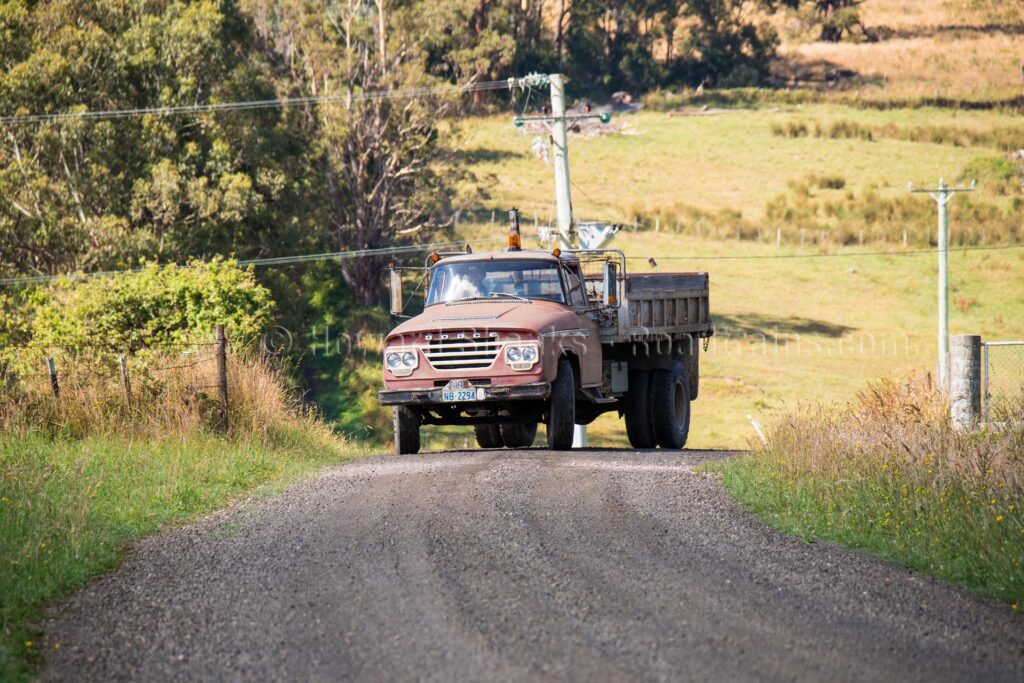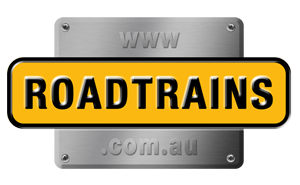“I’ve just paid the registration on my old Dodge tipper for the 52nd year,” Rodney Linger smiled as he introduced himself, replacing the dipstick back into the Perkins 6-354 engine. “It still doesn’t use a drop a drop of oil,” he casually remarked, giving the left mudguard an affectionate pat as he walked back inside the workshop and placed the rag back on the bench.
 “The truck was three years old when I purchased it in 1971, but the tipper body has been on two other trucks before this one,” he added. “Mind you, I’ve had to reskin the tipper floor a few times over the years. Although it originally had an underbody hoist. But, the previous owner replaced it with the two-stage hoist.”
“The truck was three years old when I purchased it in 1971, but the tipper body has been on two other trucks before this one,” he added. “Mind you, I’ve had to reskin the tipper floor a few times over the years. Although it originally had an underbody hoist. But, the previous owner replaced it with the two-stage hoist.”
In 1971, Rodney Linger was 25 years old, driving road graders and trucks for the Hydro down in Strathgordon. While the wages for machine operators were better than milking cows back on the farm, they still were not enough to save for a house deposit.
“Back in ’71, I was trying to buy a house and get married,” Rodney recalled. “My father-in-law, Old Jack, worked for Murrays at Mole Creek. Murrays ran a reasonable fleet of buses and trucks, and Old Jack heard that their Dodge was coming up for sale with some work. So that’s how I ended up with it.”
Not surprisingly, the speedometer is in miles-per-hour, and Rodney conservatively estimates the speedo has done five complete rotations in the 52 years he has owned the truck. “It’s had a couple of engine rebuilds in that time, too,” he adds.
 Perkins 6-354 engines
Perkins 6-354 engines
“These Perkins 6-354 engines are very fuel efficient and extremely reliable,” he explained. Besides, they’re straightforward to maintain. I’ve done all the truck’s maintenance, repairs and modifications here. About the only time I’ve had to send any part away is the engine block to have the cylinders machined. Because this model engine has replaceable dry-type cylinder liners that require boring once installed.”
According to the Dodge brochure, the Perkins 354 cubic-inch (5.8-Litre) engine was selected as the best diesel engine to provide dependable power in true Dodge tradition. Indeed, a bold marketing statement back in the late sixties when they printed this brochure. But by the late sixties, the Perkins 6-354 engine already had eight years of production under its belt, powering tractors, trucks and other industrial plants.
The popularity of the engine with OEM truck makers is primarily because the Perkins 6-345 engine had a short overall length for an in-line six motor, which meant that it slotted easily into engine bays designed for shorter V8 petrol engines. In addition, Perkins engineers positioned the camshaft low in the block, minimising the size of the timing case, which allowed space for the water pump above, shedding the overall engine length compared to other in-line sixes. Yet Perkins achieved even further length reductions in the engine block by paring coolant spaces between the cylinders to a minimum and using a narrow bore dimension of just under 4 inches (101.6mm) and a longer stroke dimension of 5 inches (127mm).
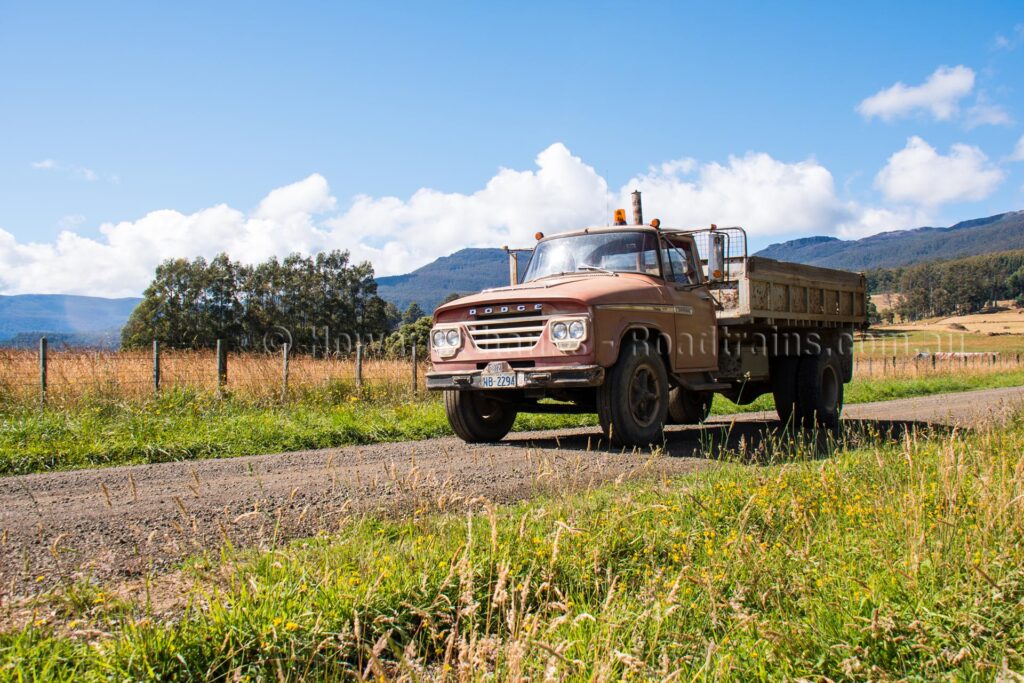 Another significant change for Perkins from the previous 6-cylinder engine models was the introduction of direct fuel injection, using a toroidal chamber in the piston crown rather than the Aeroflow chamber in the cylinder head. Consequently, this resulted in more power from the same swept volume with improved fuel economy. Now with accurately cast inlet ports in the head and the new CAV pump and injectors. Perkins achieved new standards of smoke emissions.
Another significant change for Perkins from the previous 6-cylinder engine models was the introduction of direct fuel injection, using a toroidal chamber in the piston crown rather than the Aeroflow chamber in the cylinder head. Consequently, this resulted in more power from the same swept volume with improved fuel economy. Now with accurately cast inlet ports in the head and the new CAV pump and injectors. Perkins achieved new standards of smoke emissions.
“They’re a good reliable engine,” Rodney said. “They have a fully counterbalanced seven-bearing induction hardened crankshaft of chrome molybdenum steel and never give any trouble.”
“When these trucks were new, Dodge made a big noise about the Chrysler alternators they fitted to these trucks. There would deliver a full charge even at low engine RPM, which improved battery life and made cold starting easier.”
Australian-built Dodge AT4
The Australian-built Dodge AT4 truck range enjoyed a long production run from 1962 through to 1973. Interestingly, this model shared bodywork and chassis with International AB, C-line and D-line trucks to reduce production costs.
“There were many parts commonalities between this and the equivalent international model,” Rodney revealed. “Mind you, these days, I’ve got a few old donor trucks up in the back paddock as some parts are getting a little harder to source now. But this Dodge HD model was a much heavier constructed truck than its International built counterpart. For instance, the Dodge HD has a double skin Hi-Strength chassis frame.”
The Dodge HD frame dimensions are; 10” x3” x0.312” (254×76.2×7.9mm) with a 0.187” (4.74mm) channel reinforcement.
“The Inter’s had the 2-speed Eaton diff, and the Dodge HD had Rockwell-Timken 2-speed rear axle, which was a more robust final drive. It takes a lot to break these Rockwell final drives, but with the Eaton diff, you only need to pull up with one set of drive wheels in a hole or puddle and let the clutch out a little too fast, and you’ve done an axle.”
“They’re a very forgiving truck to drive with the 5-speed full synchromesh transmission,” Rodney said. “When we were on forestry jobs up the bush, our wives would often bring us lunch. We’d get out of the truck and sit on a tree stump to eat our lunch, and it was common for our wives to jump in and do a load or two while we ate our meal.”
“But that’s how you got ahead when you were on contract as an owner-driver back in the early days,” Rodney explained.
One unique feature of the tipper body is the safety frame. It is attached to the tipper chassis with a hinge pin. The top of the safety frame attaches to the tipper body with rollers inside a channel. The idea behind the safety frame is to add stability to the tipper while it’s raised in the air.
“It’s a terrific idea,” Rodney admits, “The frame was on the body when I purchased the truck, but over the years, I’ve made a few refinements to add functionality. One thing I’ve added that works a treat is extra holes that enable me to put stops that stop the body from rising higher than where I’ve placed the stops. This is particularly handy when tipping in paddocks or the rough countryside.”
“I’m amazed at how high some modern tippers go without any safety device to prevent them from toppling over.”
10-yard Tipping Trailer
“Not long after I purchased the truck, I modified the tipper body to make it interchangeable with a turntable. Then I connected it to a single-axle 10-yard tipping trailer. This system worked extremely well for many years, but when larger bogie-drive rigid 10-yard tippers with dog trailers arrived on the scene, I returned to the rigid tipper. The tipper has approximately a six-yard capacity which extends to about seven yards with the hungry boards.”
The shoot on the rear of the tipper is another of Rodney’s unique home-built devices he uses to fill the wheel ruts in farm laneways. “It does a terrific job,” Rodney said.
“You might notice I’ve moved my chains out to the edge of the tailgate, too,” Rodney points out. “This way, when I’m spreading gravel, I get a nice even coverage across the entire road. In the early days, most road bases for forestry and farms came straight from the quarry floor. The material never went through a crusher like it does today, so it was a common occurrence to get tree roots jammed in the tailgate chain. If this happened, you’d end up with a tremendous bare patch where you were spreading.
 However, the chains at the outer extremities eliminated this problem considerably and made it easier to get the tree roots out of the tailgate too.
However, the chains at the outer extremities eliminated this problem considerably and made it easier to get the tree roots out of the tailgate too.
The ring-feeder-looking arrangement on the right rear bumper enables Rodney to connect a rock-collecting machine to the truck, which he uses to remove rocks from paddocks in preparation for crop planting.
“When it’s connected to the outer coupling, it places the conveyor in the centre of the tipper body, and I can easily keep an eye on the machine as I tow it around the paddock. Then when I need to transport it to the next farm on the road, I hook it up to the standard centre coupling and the machine tows behind like a regular trailer.
 Simple Mechanical System
Simple Mechanical System
“That old piece of string along the side of the tipper is so I can open the tailgate from inside the cabin,” Rodney smiled. “It’s a simple mechanical system. If the rope breaks, you can join it together quickly with a knot. It was pretty rare I’d ever get held up on the job.”
“I’ve always run clean skin Michelin tyres,” Rodney volunteered. “I always believed them to be a superior tyre and a little more resistant to punctures than other brands. Thankfully, in 52 years, I’ve only ever had a handful of flat tyres, which is pretty good going in my book.”
“We’d better put some fuel in the old girl and go and get a load,” Rodney said, pointing towards the old Golden Fleece diesel pump. Remind me to fill up a couple of those jerry cans too for the loader,” he added.
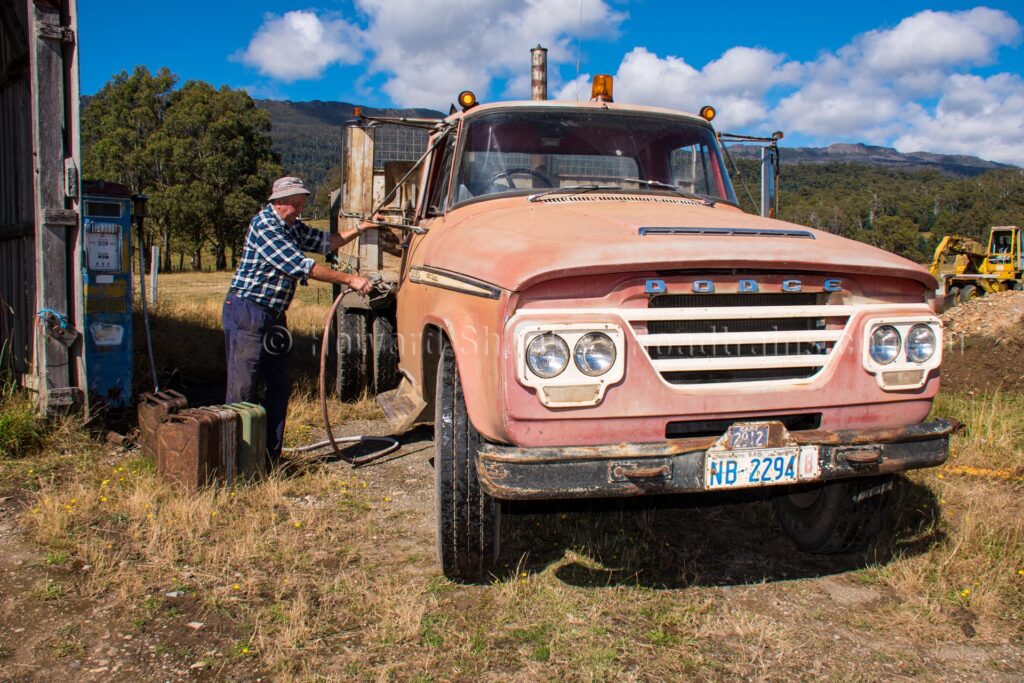 Fifteen minutes later, the Perkins 6-345 was humming along nicely as Rodney guided the old Dodge along the dirt road that meanders its way past the lush farming ground on the way to the gravel pit. Inside the cabin, the ride was surprisingly comfortable, albeit with an old rattle now and then.
Fifteen minutes later, the Perkins 6-345 was humming along nicely as Rodney guided the old Dodge along the dirt road that meanders its way past the lush farming ground on the way to the gravel pit. Inside the cabin, the ride was surprisingly comfortable, albeit with an old rattle now and then.
For the time being, at least, Rodney is content with the amount of work he does with the old Dodge, but he admits that he has thought about hanging the keys on the nail in the shed indefinitely.
From a durability and reliability point of view, Rodney states that his investment in a Dodge 675HD over half a century ago was a good one.
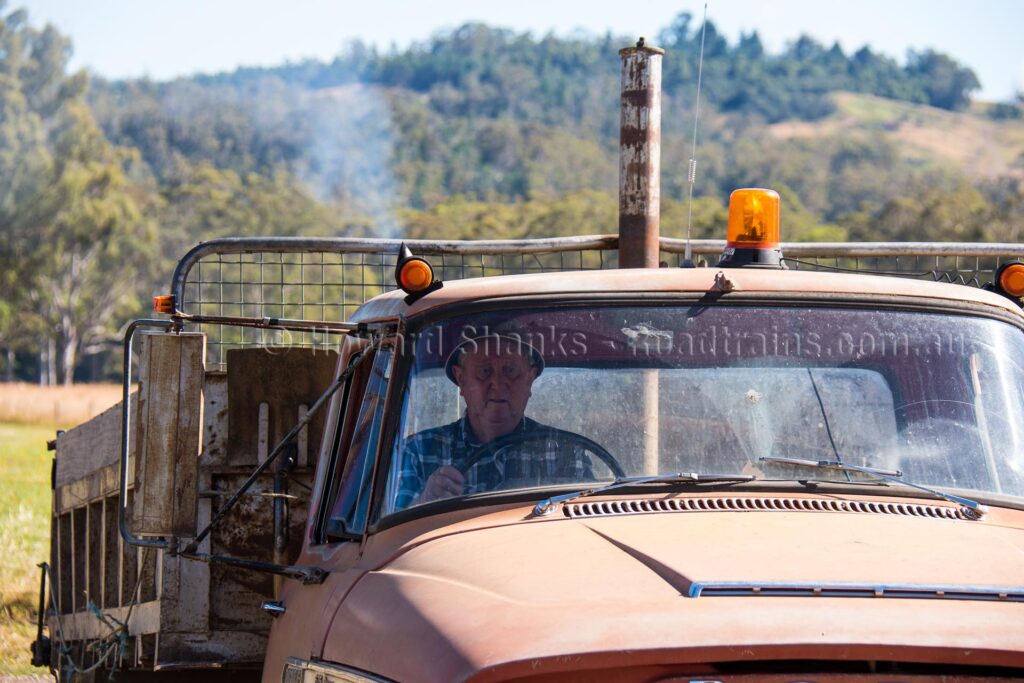
Truck Specifications
Make: Dodge
Model: 675HD
Engine: Perkins 6-354 Diesel
Horsepower: 130hp (97)kw @2800 RPM
Torque: 260 lb/ft (352Nm) @ 1450 RPM
Gearbox: Dodge 5-Speed Synchromesh
Front Axle: 7,000lb (3175kg)
Front Suspension: Multi-leaf semi-ellptic 3,100lb (1406kg) each
Rear Axles: 17,000lb (7,700kg) Rockwell Timken 2-speed
Rear Axle Ratio: (Low) 7.66:1 (High) 6.16:1
Rear Suspension: 7,500lb (3401kg) Multi-leaf with wrapped fixed eye
Front Brakes: 16” (406mm) Hydraulic
Rear Brakes: 15” (381mm) Hydraulic
Steering: Worm with 3-tooth roller 24.7:1 ratio
Wheelbase: 175” (4,445 mm)
Interior: Metal
Seats: 3 man bench seat (standard)
Bostrom Viking 301 (fitted later)
Bumper: Steel
Battery Box: 12V Mounted LHS of chassis
